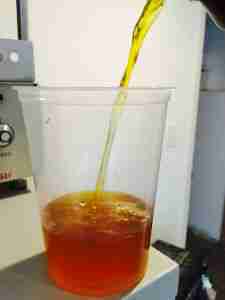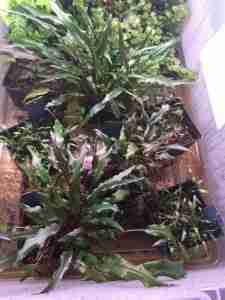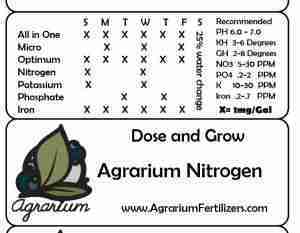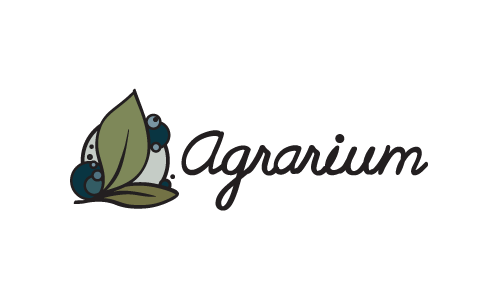 When the propagation project started with Biotope One there was a need for a cheap fertilizer that would not promote algae and other problems but make great growth and health. Since there is no funding for Biotope One it also needed to be as economical as possible. This ruled out expensive premixed commercial fertilizers that were mostly water anyway. So, we set out to figure out how to make a safe aquarium fertilizer at home. We used dry fertilizers called dry ferts in the hobby. Why buy. mostly water?
When the propagation project started with Biotope One there was a need for a cheap fertilizer that would not promote algae and other problems but make great growth and health. Since there is no funding for Biotope One it also needed to be as economical as possible. This ruled out expensive premixed commercial fertilizers that were mostly water anyway. So, we set out to figure out how to make a safe aquarium fertilizer at home. We used dry fertilizers called dry ferts in the hobby. Why buy. mostly water?
Several formulas were tested and after some adjusting and more testing this is one that worked as a good DIY All in One Liquid planted aquarium fertilizer. It worked well in the planted tanks of varying sizes we tested it on and it also worked in the non aquarium applications. For the planted aquarium with injected CO2 or liquid carbon supplements with glutaraldehyde the All in One worked very well and there were no issues with shrimp or other invertebrates that it was tested with. (There’s a TON of people that are against glut in the aquarium but this is a cheap alternative if you still want to use glut in the planted tank).
The emersed grown propagation and wabi kusa as well as other terrestrial plants all showed good results. We were growing many cryptocorynes, echinodorus, and stem plants emersed for faster growth and to save room. When plants came out of the plant tissue culture vessels they needed a lot of room just because of the sheer volume of plants there are in one vessel. We tried Osmocote and that worked in some plants and some setups but the Agrarium All in One was the most versatile.
 Growing aquatic plants emersed with this All in One liquid planted tank fertilizer showed great results as well. The micronutrients and macronutrients allowed quick healthy growth when added to the water in the bottoms of the nursery trays. Twice a week worked well for most plants but echinodorus plants needed three times a week when they were growing well. About 10 ml to 15 ml per foot of floor space was what we were experimenting with weekly.
Growing aquatic plants emersed with this All in One liquid planted tank fertilizer showed great results as well. The micronutrients and macronutrients allowed quick healthy growth when added to the water in the bottoms of the nursery trays. Twice a week worked well for most plants but echinodorus plants needed three times a week when they were growing well. About 10 ml to 15 ml per foot of floor space was what we were experimenting with weekly.
Wabi Kusa as well as small bowl type planted jars the All in One was very easy to dose. Since it is a somewhat dilute solution it is easier to approximate the volume of water. There’s more room for error and overdosing with fertilizer is less of a risk. Also when measuring fertilizer for 1 gallon it is much easier than trying to measure for 1 gallon with a less math friendly measurement.
Terrestrial plants also showed promise with the All in One liquid aquarium plant fertilizer. With the mostly aroid plants like homalomena and philodendrons it was tested on great results were shown. The micronutrients seemed to really help out along with the macronutrients. Terrestrial plants were given All in One applied to the soil and as a foliar spray with good results. Applying to the soil in quantities of about 10 ml twice a week helped the aroids it was tested on.
As a foliar spray the liquid is put into a spray bottle and atomized over the plant. The plants were sprayed lightly twice a week with the mixed concentration. This showed good results and great growth as well. The aroids that we tested did well as did the echinodorus. Some plants do not like wet leaves so make sure you research or test it to avoid problems with plants like gesneriads or African violets. If you are unsure or want to experiment with other plants we would recommend a 50% Allin One and water solution to dilute it some.
Making the solution is relatively easy as well once you have acquired the dry fertilizers. They are fairly easy to find online and also affordable especially when compared to premixed solutions you are paying for water and packaging mostly. The dry ingredients are measured and added to half the amount of distilled water. After all the dry fertilizer and components are added top it off to the amount you are mixing with distilled water and shake.
 You will need a scale, dry fertilizer ingredients, and something to store your solution in. Be sure to label it properly so no one else drinks it or uses it improperly. I like to use the small paper condiment cups to do my small measurements with. I set a new cup on the scale, tare it to reset the weight to zero, then measure the ingredients. I dump it into the distilled water using a funnel and grab a new condiment cup for the next ingredient. Instead of a funnel you can use a rolled up piece of paper or improvise accordingly.
You will need a scale, dry fertilizer ingredients, and something to store your solution in. Be sure to label it properly so no one else drinks it or uses it improperly. I like to use the small paper condiment cups to do my small measurements with. I set a new cup on the scale, tare it to reset the weight to zero, then measure the ingredients. I dump it into the distilled water using a funnel and grab a new condiment cup for the next ingredient. Instead of a funnel you can use a rolled up piece of paper or improvise accordingly.
There is no precipitation, or settling of dry material out of the liquid, that we experienced when keeping the fertilizer. If left in a hot well lit room there occasionally was some surface contamination. If stored in a light proof dark bottle and in a cool area there was no growth or side effects. This growth showed no ill effects and never occurred in other conditions.
Many, if not most, under fertilize their plants in a planted aquarium. Fertilizing them makes them grow faster to become a more healthy and colorful plant. When coupled with proper water changes and lighting in the proper intensity and color you will experience lush growth and nice color. An easy to mix and an easy to dose fertilizer will help you grow a beautiful aquarium. The DIY Agrarium All in One will do just that and will save you time and money.
Ingredients List for DIY Agrarium All in One Liquid Planted Tank Fertilizer
4.8 grams KNO3 Potassium nitrate
2.2 grams KH2PO4 Potassium phosphate
1.7 grams MGSO4 Epsom salt (magnesium sulfate heptahydrate)
0.5 grams C6H8O6 Ascorbic acid
0.2 grams C6H7KO2 Potassium sorbate
5.0 grams Plantex Planted CSM+b micronutrients
1 liter of distilled water.
— This is the amounts in Parts Per Million added in a 6 day dosing period —
5.9 PPM of NO3.31 PPM of PO4
3.9 PPM of K
.39 PPM of Mg
Dosing is 1ml per gallon, or 10ml per 10 gallons for larger tanks, for ease of measuring and dosing. These numbers are for a weekly dosing period as seen in the dosing chart above.
 Biotope One A Study of Flora and Fauna
Biotope One A Study of Flora and Fauna 


